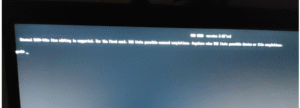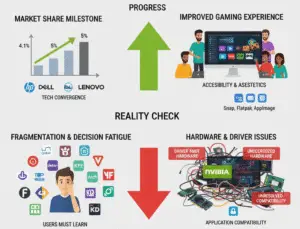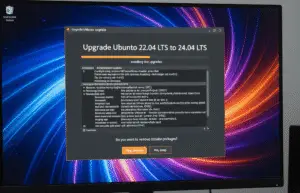
AI in Cybersecurity 2025: The Future of Digital Protection
Introduction: The AI Security Revolution
Imagine a world where cyber threats are stopped before they can cause harm, where your devices automatically patch vulnerabilities, and where hackers are outsmarted at every turn. This is the promise of AI-powered cybersecurity in 2025—a new era where artificial intelligence acts as an invisible shield, protecting individuals, businesses, and governments from ever-evolving digital dangers.
In this comprehensive guide, we’ll explore:




By the end, you’ll understand why AI is no longer just an optional tool in cybersecurity—it’s becoming the backbone of digital defense.
What is AI Cybersecurity? (Explained Simply)
AI cybersecurity refers to the use of machine learning (ML) and artificial intelligence to detect, prevent, and respond to cyber threats faster and more accurately than humans alone.
How It Works:
Learns Normal Behavior – AI studies how users and systems typically operate.
Detects Anomalies – Flags unusual activity (e.g., a login from a foreign country at 3 AM).
Responds Instantly – Blocks threats before they cause damage.
Improves Over Time – Gets smarter with each attack it encounters.
Everyday Example:
When your bank texts, “Did you just make a $5,000 purchase in Dubai?”—that’s AI fraud detection in action.

5 Ways AI Will Revolutionize Cybersecurity by 2025
1. Predictive Threat Hunting
What It Does:
AI analyzes global cyberattack trends to predict where hackers will strike next.
Acts like a “weather forecast” for cyber threats.
Real-World Example:
Darktrace’s AI predicts ransomware attacks with 99% accuracy by recognizing early warning signs.
2025 Outlook:
Companies will receive automated alerts about impending attacks days in advance.
2. Self-Healing Networks
What It Does:
AI automatically detects and patches vulnerabilities before hackers exploit them.
Systems can repair themselves during an ongoing attack.
Current Tech:
Cisco’s Self-Defending Networks use AI to isolate infected devices in seconds.
2025 Impact:
Zero-day exploits (previously unknown vulnerabilities) will be neutralized instantly.
3. Behavioral Biometrics & AI Authentication
What It Does:
AI learns your unique behavior: typing speed, mouse movements, and phone usage patterns.
Can detect imposters even if they have your password.
Example Today:
Microsoft’s Continuous Access Evaluation logs out suspicious users in real-time.
2025 Upgrade:
“Invisible” authentication—no passwords needed, just AI verifying your habits.
4. AI-Powered Honeypots & Deception Tech
What It Does:
Sets up fake data traps to lure hackers and waste their time.
Studies hacker techniques to improve defenses.
Working Now:
IBM’s Honeypot Networks trick attackers into revealing their methods.
2025 Vision:
Entire decoy corporate networks will mislead hackers into dead ends.
5. Universal AI Phishing & Deepfake Defense
What It Does:
Reads emails like a human to spot phishing scams.
Detects AI-generated deepfake videos and voice fraud.
Current Success:
Gmail’s AI already blocks 99.9% of phishing emails.
2025 Challenge:
Stopping AI-generated scam calls that mimic loved ones’ voices.
How AI Cybersecurity Works (Step-by-Step)
Data Collection – AI monitors network traffic, logins, and file access.
Behavior Analysis – Learns what “normal” looks like for each user.
Threat Detection – Flags anomalies (e.g., sudden mass data downloads).
Automated Response – Blocks attacks, alerts admins, or isolates systems.
Continuous Learning – Improves defenses with each new threat.
Analogy:
Think of AI cybersecurity like a smart home security system that:
Knows when your dog walks past a motion sensor (normal).
Instantly alerts you if a stranger breaks in (threat).
Why AI Cybersecurity Matters for Everyone
For Individuals:



For Businesses:



For Governments & Critical Infrastructure:



AI Cybersecurity Tools You Can Use Today
Bitdefender (AI Antivirus) – Stops malware in real-time.
Cloudflare (AI Web Protection) – Blocks malicious bot traffic.
Okta (AI Login Security) – Detects suspicious sign-in attempts.
Challenges & Risks in AI Cybersecurity



Ethical Debate:
Should AI be allowed to hack back against attackers?
Who’s responsible if AI accidentally blocks legitimate users?
The Future Beyond 2025



How to Stay Protected in an AI-Driven Cyber World
Enable AI Security Features – Use tools like Microsoft Defender for Endpoint.
Adopt Password Managers – AI-powered ones like Dashlane monitor breaches.
Update Devices Regularly – AI patches vulnerabilities automatically.
Educate Employees & Family – AI can’t stop all human errors.
Final Thoughts: The Age of Invisible Armor
By 2025, AI cybersecurity will function like an immune system—always working in the background, adapting to new threats, and keeping you safe without you even noticing. The best protection will be the attacks that never reach you.




